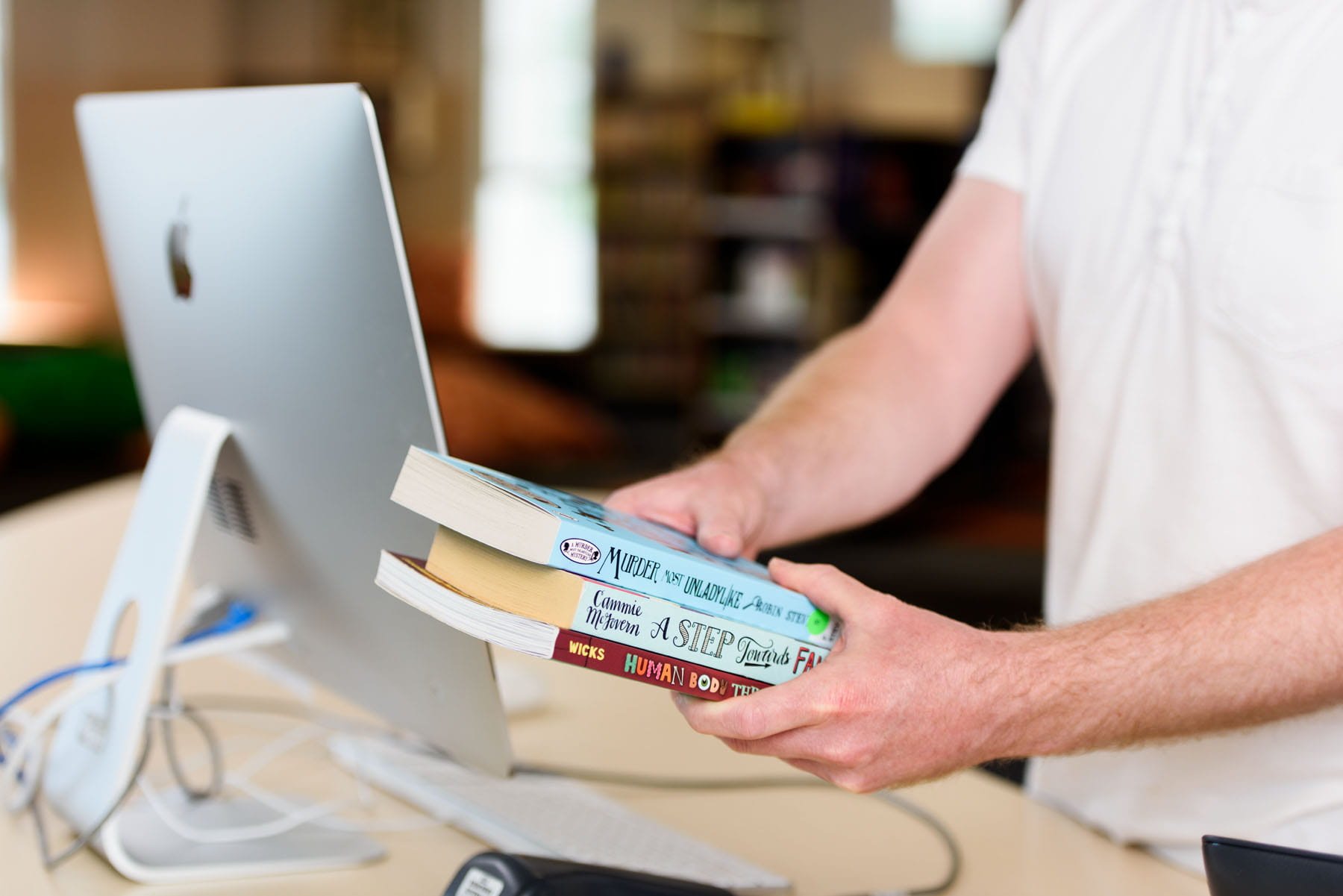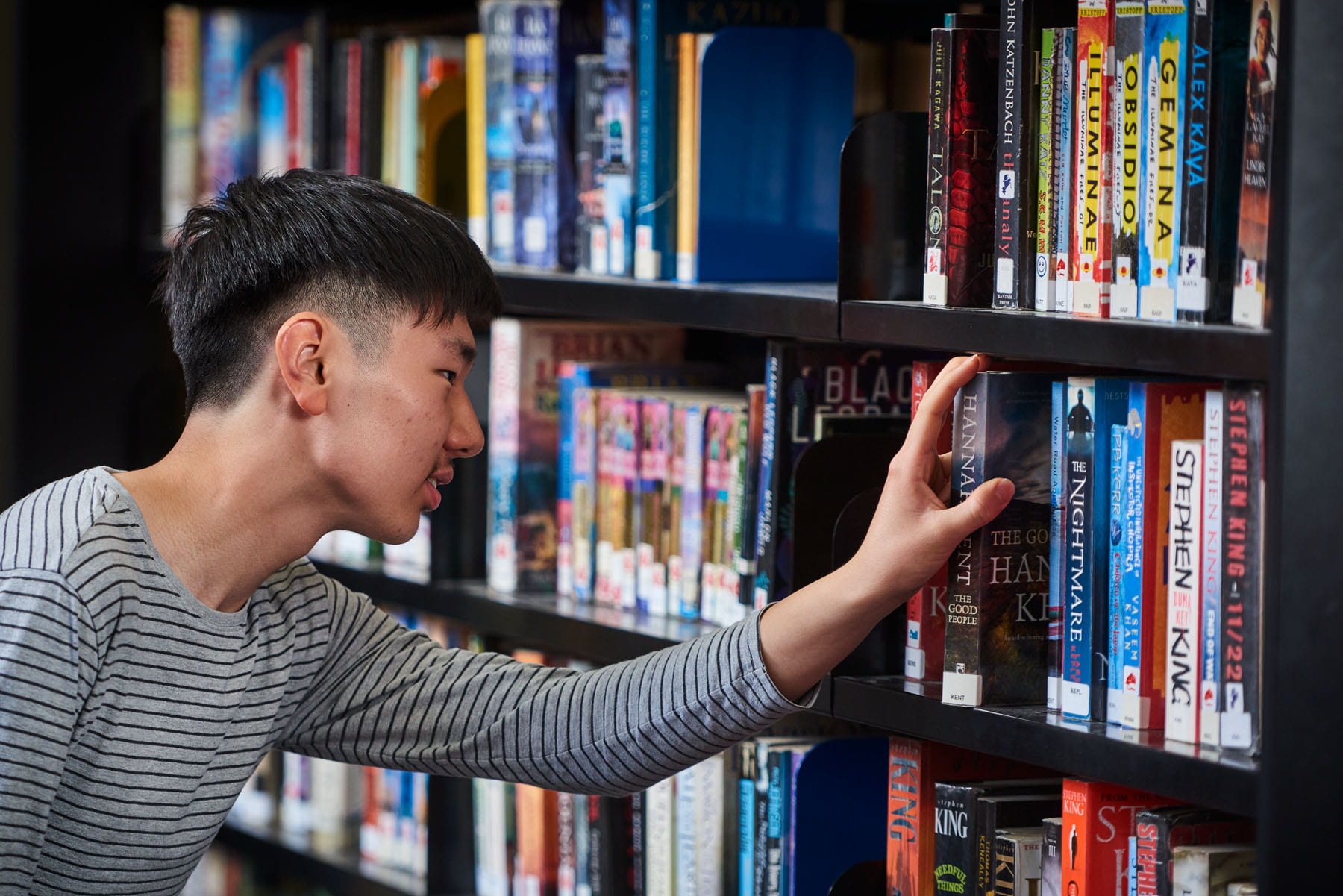
Welcome to lesson 4 of the SCIS short course! Let’s get started …
Libraries use descriptive cataloguing to describe the resources within their collections so that they can be found by users. A library catalogue helps your users to discover what is in the library collection, helps them select the resource that meets their need, and directs them to where the resources can be found or accessed. This includes ’physical’ materials, such as books and DVDs on the shelves, as well as online resources, ebooks, apps and websites.
Cataloguers use a number of international standards to create consistent records so that related resources can be found, identified, selected and obtained. International standards also ensure that users can navigate and explore the catalogue database to find other resources of possible interest.
Doing your own cataloguing takes a lot of time. Rather than creating a brand new record from scratch every time a resource needs to be added to the collection, many libraries prefer to obtain their records from outside, saving them a lot of time. We will look at this a little more in lesson 7.
The level of cataloguing addresses how completely a record is catalogued. Full cataloguing generally takes more time as it includes verification with international standards.
Describe your library collection
In lesson 3, we introduced you to cataloguing. The information, or metadata, that the catalogue record contains provides access to the materials. Consistent and accurate cataloguing means that your users can find all of the information that the library holds to match their search.
Descriptive cataloguing is when standardised sets of rules such as RDA: Resource Description and Access are applied so that the title, authorship, publication data, and the physical extent of a work (for example, how many pages a book might have) are easy to find.
As well as the cataloguing standard used, such as RDA, libraries use an international standard called MARC (MAchine Readable Cataloguing). This gives each part of the catalogue record a number, or MARC field. For example, the 100 field contains the author’s name, and the 245 field contains the title.
Descriptive cataloguing focuses on what the resource is — whether it is a book 300 pages long, or a DVD in black and white — whereas subject cataloguing focuses on what the item is about; for example, a book about pet care.
Fields in a catalogue record
The most important fields in a catalogue record are listed in the table below.
| Type of information | MARC Field | Description |
| Author | 100 | The name of the main author, for works by individuals. If there is no author, this field is left out. If the author is a corporation or a meeting, then a different field is used. An individual author’s names is usually formatted to show the surname first. |
| Title | 245 | The title, sub-title and statement of responsibility of the work. |
| Publication details | 264 | Publisher and place of publication. Older records will contain this information in a 260 field. |
| ISBN | 020 | International Standard Book Number. This is an identifying number that is assigned to each book by its publisher. |
| DDC | 082 | Dewey Decimal Classification number. This field contains the DDC number and information about what edition of Dewey was used. |
| Description | 300 | Physical description, number of pages (for books with numbered pages), and information about whether the item is illustrated. |
| Summary | 520 | A brief summary of what the item is about. |
| Subject | 650 | Topical subject heading, taken from a thesaurus or controlled vocabulary. This field contains additional information to identify which controlled vocabulary was used. |
| Genre | 655 | Genre heading for the resource. This field contains additional information to identify which controlled vocabulary was used. |
Most of the fields in the above record are considered part of the description of the resource, providing information to help the user identify and select the resource that best meets their needs.
The DDC, Subject and Genre fields relate to what the resource is about. The standards used to create these will be covered in lessons 5 and 6.
How do people search?
- A “basic” or keyword search that allows the user to type in a search term or phrase and then search across the whole database. This will often bring back too many search results, which then have to be narrowed down or filtered.
- An “Advanced search”, which allows the user to do a much more specific, or targeted search by selecting particular fields. Typical fields include author, title, series, subject or ISBN. This allows for greater precision in your search results.
Cataloguing digital resources
Digital content is an important part of library collections. By including records for digital materials in the library catalogue, you make it easier for your students and teachers to find all the information they need from a single search point — the library catalogue. Records are catalogued using the same standards and subject headings that are applied to print-based materials so that resources of all formats for the same topics will be found.
Activity
As has been mentioned before, each library management system will display the cataloguing data differently, even though underpinning all records are the cataloguing standards mentioned earlier.
Study the OPAC display in your library management system. Identify where and how your systems display the following data:
- Title (and statement of responsibility)
- Author’s name
- Publication details
- Description
- Summary
- ISBN
Go to your library management system’s cataloguing module. Can you see your catalogue record in the MARC format (see example in lesson 3)? If you can, locate the following descriptive fields and identify the actual data it contains.
020 ISBN
100 Author name
245 Title
264 (or 260) Publication details
300 Description
520 Summary
Compare the MARC record with what your users can see in OPAC.
Conclusion
In this lesson, we have explored how you can describe the resources in your library collection. We provided an overview of important fields used in a catalogue record and how they are displayed in an OPAC. Next week, we’ll take look at controlled vocabularies, subject headings, and authority files.
Further reading
Kelsey, Marie, 2018, Cataloging for School Librarians, 2nd edition. Blue Ridge Summit: Rowman & Littlefield Publishers, 2018.







